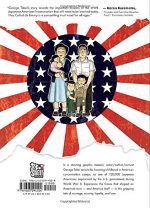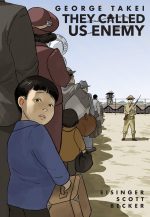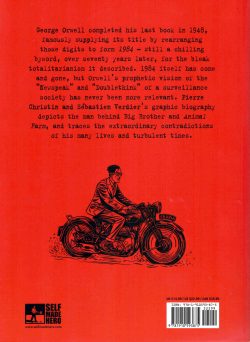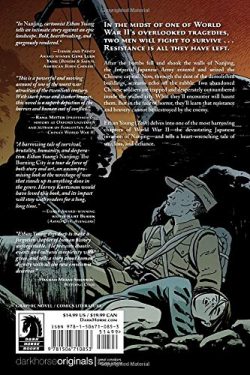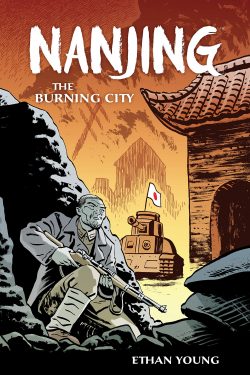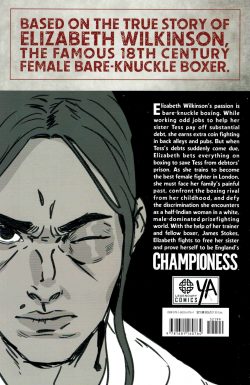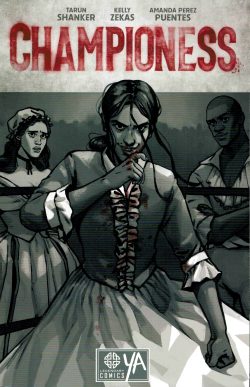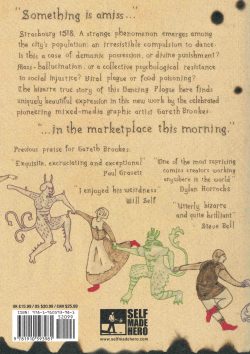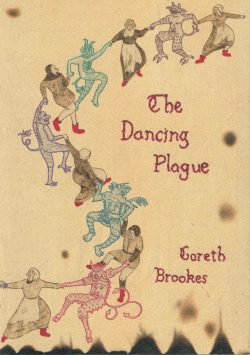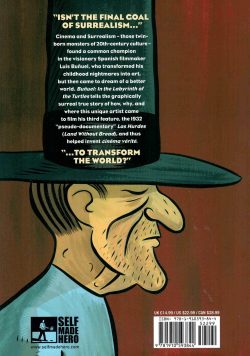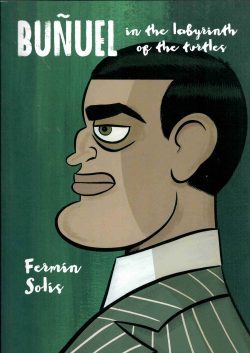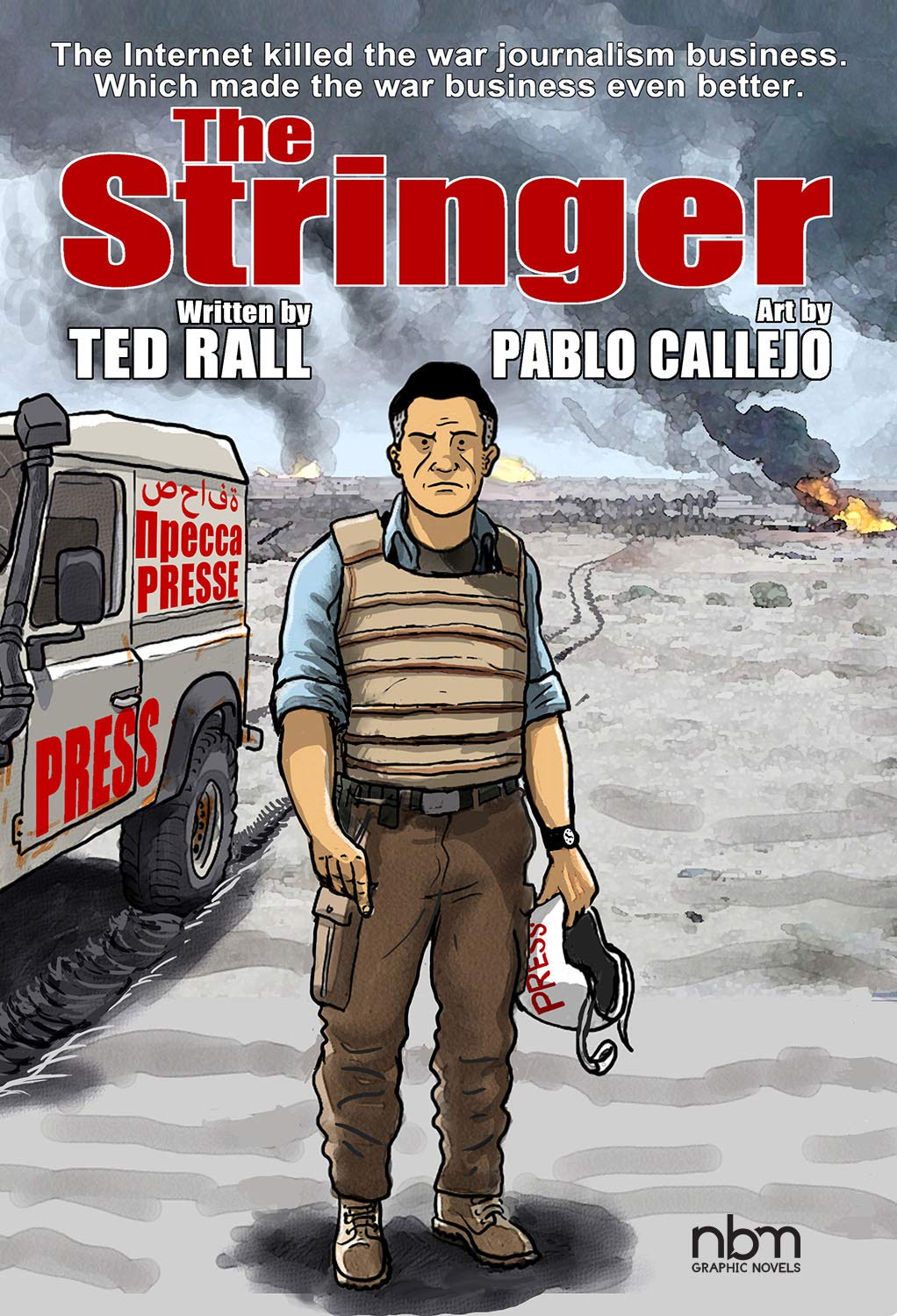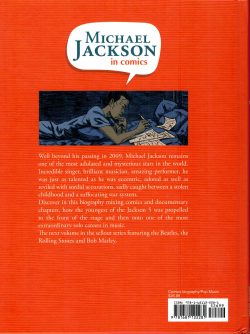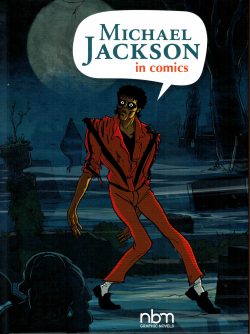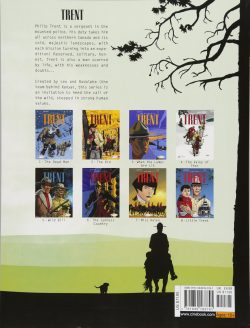
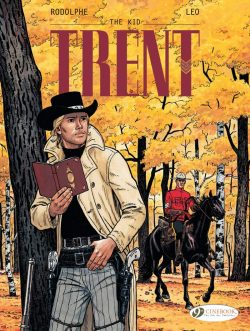
By Rodolphe & Léo with colour by Marie-Paul Alluard, translated by Jerome Saincantin (Cinebook)
ISBN: 978-1-84918-374-1 (Album PB)
European comics audiences have long been fascinated with the mythologised American experience, whether it be the big-skied Wild West or later eras of crime-riddled, gangster-fuelled dramas. They also have a vested historical interest in the northernmost parts of the New World which has resulted in some pretty cool graphic extravaganzas.
Léo is actually Brazilian artist and storymaker Luiz Eduardo de Oliveira Filho: born in Rio de Janeiro on December 13th, 1944. Attaining a degree in mechanical engineering from Puerto Alegre in 1968, he was a government employee for three years, until forced to flee the country because of his political views. While a military dictatorship ran Brazil, he lived in Chile and Argentina before illegally returning to his homeland in 1974. To survive, he worked as a designer/graphic artist in Sao Paulo and created his first comics art for O Bicho magazine.
In 1981 he migrated to Paris, seeking to pursue a career in Bande Dessinée, and found some work with Pilote and L’Echo des Savanes as well as more advertising and graphics fare. The big break came when Jean-Claude Forest invited him to draw stories for Okapi which led to regular illustration work for Bayard Presse. In 1988 Léo began his long association with scripter and scenarist Rodolphe D. Jacquette – AKA Rodolphe.
His prolific, celebrated writing partner has been a giant of comics since the 1970s: a Literature graduate who transitioned from teaching and running libraries to creating poetry and writing criticism, novels, biographies, children’s stories and music journalism. In 1975, after meeting Jacques Lob, he expanded his portfolio to write for a vast number of artists and strip illustrators in magazines ranging from Pilote and Circus to À Suivre and Métal Hurlant. Amongst his most successful endeavours are Raffini (with Ferrandez) and L’Autre Monde (Florence Magnin) but his collaborations in all genres and age ranges are too numerous to list here.
In 1991 he began working with Léo on a period adventure series of the far north. Taciturn, introspective and fiercely driven Royal Canadian Mounted Police sergeant Philip Trent premiered in L’Homme Mort, forging a lonely path through the 19th century Dominion over eight tempestuous, hard-bitten albums between then and 2000. He also prompted the collaborators’ later fantasy classics Kenya (and its spin-offs), Centaurus and Porte de Brazenac.
Cast very much in the classic adventure mould as crafted by the likes of Jack London and John Buchan, Trent is a man of few words, deep thoughts and unyielding principles who gets the job done whilst stifling emotional turmoil boiling deep within him…
As ‘Le Kid’, this conflicted, moving second exploit originated in 1992, opening with a robbery in Blacktown, North Dakota that goes appallingly awry. The bandits are idealistic teenagers and when Laura is killed in a shootout, her poetry-obsessed partner Emile Tourneur goes completely off the rails…
With nine confirmed kills and nothing to live for, Emile heads north and becomes an RCMP problem. One of many officers assigned to catch him, Trent is despatched to Lake Manitoba with explicit orders to find but not confront the ruthless killer, aided only by faithful canine companion “Dogâ€.
Following sporadic poetic graffiti, the officer quickly picks up the trail and the impression that something isn’t right. For one thing, the kid is not hiding his tracks, and making plenty of friends and admirers along the way as his adds to the notches on his gun. Some think he’s only killing people who have it coming…
Eventually, Trent locates his quarry in the Frozen wastes and far-too-easily overcomes him. Their long trek back only adds to the mystery of the Rimbaud-quoting golden boy, who has a distressing knack of asking uncomfortable questions…
Brooding tensions and paradoxical revelations explosively come to a head when the now amiable fellow-travellers are ambushed by escaped convicts. Sudden, ruthless gunplay leaves the Mountie inexplicably alive, alone and still fully armed. He can only assume his recent captive is provoking him for some reason, as he traces a trail back to the scene of the kid’s last atrocity and a town full of vengeful survivors…
A beguiling voyage of internal discovery where environment and locales are as much a major character as hero and foe, The Kid offers suspense, action, humour and poignant evocation in a compelling confection that will appeal to any fan of widescreen cinematic crime fiction or epic western drama.
Original edition © Dargaud Editeur Paris 1992 by Rodolphe & Léo. All rights reserved. English translation © 2016 Cinebook Ltd.


